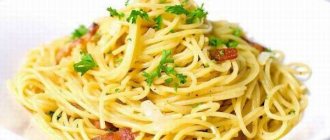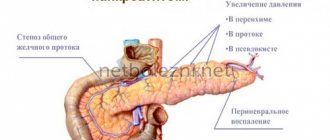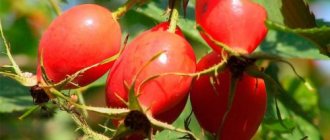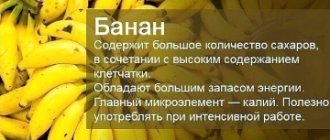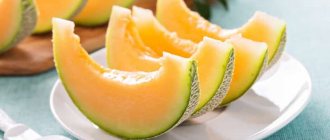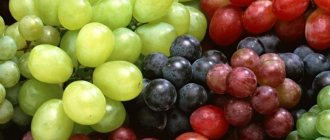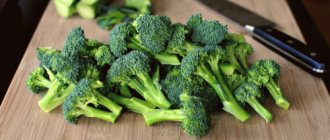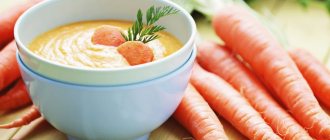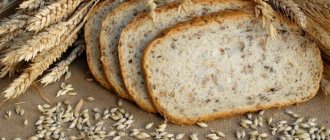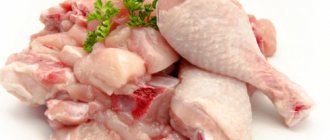Dried apricots for pancreatitis are included in the therapeutic diet, because this product, obtained from dried apricots, retains most of the nutrients necessary for the normal functioning of the pancreas.
Dried apricots for pancreatitis are included in the therapeutic diet, because this product, obtained from dried apricots, retains most of the nutrients.
Benefits and harms
Bright orange dried fruits contain vitamins B1, B2, B5, PP, C, E, necessary for the production of pancreatic enzymes. Dried apricots are rich in beta-carotene, which protects the organ from malignant tumors. Nicotinic acid, contained in large quantities in the product, improves blood circulation in the gland and reduces pain. This acid also normalizes intestinal motility, so a person who eats dried apricots gets rid of constipation that accompanies inflammation.
Many of the beneficial properties of dried fruit lie in its microelements: potassium, phosphorus, sodium, iron, magnesium and calcium. For example, thanks to potassium and sodium, water-salt metabolism in the body is normalized. The iron in the product helps people cope with the anemia that they experience with chronic pancreatitis. Dried apricots contain pectin, which cleanses the body of toxins and waste, thereby speeding up the process of treating inflammation of the pancreas.
But dried apricots contain substances that harm the body during pancreatitis. For example, fiber increases the load on the gland, because takes a long time to digest. About 80% of the composition of dried apricots is sucrose. To process this carbohydrate, the pancreas needs to produce more insulin, but during the period of inflammation of the gland, its secretory function decreases. This can lead to the development of diabetes mellitus in the patient.
We recommend reading: Is it possible to eat dates if you have pancreatitis?
What are the benefits of dried fruits for the body?
Dried fruits contain all the beneficial substances found in fresh fruits. The concentration of some vitamins and microelements even increases with the correct drying technique. The composition of dried fruits is extremely rich in useful compounds:
- vitamins: A, C, E, K, PP, H, all representatives of group B,
- microelements: magnesium, potassium, calcium, iron and many others - depending on the type of dried fruit,
- simple sugars (glucose, sucrose, fructose),
- complex carbohydrates (vegetable fiber),
- anthocyanins and other antioxidants.
Different types of dried fruits contain different amounts of certain components, the ratio of which determines the severity of the beneficial and harmful qualities of the product. Beneficial properties of dried fruits and berries when consumed regularly:
- Boosting immunity.
- Improved vision.
- Binding and removing poisons, cleansing the liver and intestines.
- Choleretic, laxative, diuretic effect.
- Normalization of hematopoiesis, treatment of anemia.
- Improving the condition of the walls of blood vessels and the heart muscle.
- Reducing blood pressure, normalizing heart rate.
- Rejuvenation of the body, prevention of malignant tumors, thanks to the antioxidant effect.
- Normalization of the nervous system.
- the load on the endocrine part of the pancreas increases, since high sugar levels provoke increased synthesis of insulin by this part of the organ,
- gas formation in the intestines increases,
- It is possible to develop an allergic reaction to any component.
In addition to the benefits, some dried fruits can also cause harm to the body with pancreatitis:
Flatulence warning
In order to prevent such an unpleasant symptom as bloating with accompanying spasmodic abdominal pain, it is not recommended to eat dried fruits in their pure form. Instead, it is recommended to heat them:
- prepare compotes, decoctions, infusions,
- soak dried fruits in boiling water for several minutes.
Exposure to high temperature helps soften the coarse fibers of dried fruits and slightly reduces the likelihood of increased gas formation in the intestines.
Laxative or strengthening effect?
Most dried fruits (especially dried apples, pears, prunes) have a mild laxative effect on the intestines, enhancing its peristalsis and the movement of feces. This effect helps prevent and treat constipation, remove toxins and waste from the body. Such cleansing leads to the normalization of the functioning of all organs and systems, and especially the digestive system.
How to choose?
Dried fruits will bring more benefit to the body than harm if they are of high quality, so when buying dried apricots you should pay attention to its appearance, color, taste and smell.
Beautiful, bright fruits of even orange color are the result of chemical drying of apricots in ovens. During heat treatment, they are fumigated with sulfur dioxide, which is harmful to humans, because causes irritation of the mucous membranes of the digestive organs and kills all beneficial bacteria. Dried apricots, dried in the sun, have a dark orange color with brown or brown areas.
If the surface of the products is shiny, then they have been rubbed with animal fat or glycerin.
Having purchased such dried fruits, you should first soak them for 10-20 minutes in warm water and then rinse them with hot water. The surface of high-quality dried apricots is matte, as if sprinkled with dust. The fruit should be free of mold, cracks and wormholes.
The consistency of properly dried products is not soft, but dense. If they stick to your fingers and smear on them, then the fruits were stored incorrectly or spoiled raw materials were used for drying.
When buying dried apricots at the market, taste them. If it is sour, then fermented apricots were used to produce it, but if the taste is sickly sweet, then the product was treated with sugar syrup. Most often, natural dried fruits are sweet and sour.
The smell of the orange delicacy should resemble the aroma of a fresh fruit. If your sense of smell detects gasoline notes in dried apricots, this indicates that it was dried using a gasoline burner and such a product is not worth purchasing.
Features of the selection and use of dried fruits
To avoid exacerbation of chronic pancreatitis and resumption of severe symptoms (girdling abdominal pain, vomiting, diarrhea), you should, while following a therapeutic diet, choose the right dried fruits in a store or market.
Rules for choosing a quality, useful product:
It is best to eat dried fruits grown in your own garden without the use of fertilizers or phytoncides. This is the only way to be completely confident in the quality and usefulness of the product. You can also dry fruits and berries at home yourself using a special dryer or oven.
The most optimal ways to consume dried fruits are preparing compotes, decoctions, infusions from them, adding steamed, crushed dried fruits and berries to porridges, cottage cheese, casseroles, yoghurts. You can make a hearty, delicious dessert using dried fruits, walnuts, and a small amount of honey. Dishes with dried fruits cannot be eaten on an empty stomach due to the presence of acids and essential oils.
Rules of use
A person with inflammation of the pancreas should adhere to the following rules for consuming dried apricots:
- The fruits should not be eaten on an empty stomach.
- It is forbidden to include sour dried apricots in the diet: it can provoke an attack.
- It is not recommended to eat more than 3 pieces. for 1 appointment.
The consumption of orange fruits also depends on the stage of pancreatitis, the presence or absence of concomitant diseases. Before using the product, you should consult your doctor.
Dried apricots should not be eaten on an empty stomach.
In acute form
During an acute period of inflammation of the pancreas, dried apricots are allowed to be included in the menu after therapeutic fasting. At this time, dried fruits are consumed only as part of infusions and compotes. If a person suffers from diabetes, fruits are not included in the diet, because they contain high amounts of sugar and can aggravate both conditions.
We recommend reading: Is sunflower oil ok for pancreatitis?
In the chronic stage
When pancreatitis becomes chronic, dried apricots may be present on the patient’s menu not only in the form of drinks, but also in gravies and sauces. Dried apricots for these dishes need to be well soaked and rubbed so that they are easier to digest by gland enzymes.
During remission
During the period of remission, orange dried fruits are added to various dishes: casseroles, savory cookies, desserts.
During the period of remission, orange dried fruits are added to savory cookies.
After a doctor's permission, some people can eat dried apricots fresh, after soaking them until soft. You can eat no more than 45-80 g of product per day.
Recipes for dishes and drinks with dried apricots for pancreatitis
You can prepare many dietary dishes from dried apricots. These can be jelly, compotes, jellies, gravies. Dried fruits are often added to porridges, salads, meat rolls, cottage cheese casseroles and cheesecakes, enriching them with substances beneficial to the pancreas.
Compote
To prepare compote from dried apricots you will need 2 liters of water, 230 g of dried fruits and 1 sweet apple. Apricots should be soaked in hot water for 10-15 minutes, then rinsed each piece in warm water and cut into 2-3 pieces.
During the period of acute pancreatitis, compote can be drunk by straining the liquid through a sieve.
A medium-sized apple needs to be washed and cut into slices, removing the core and skin. Place the prepared products in a saucepan and add water. Bring the dried apricot compote to a boil and cook for 10 minutes. Before drinking, cool the drink to +30°C. Sugar is not added to this drink, because... There is a lot of it in dried apricots.
During the period of acute pancreatitis, compote can be drunk by straining the liquid through a sieve. During the dormant period of a chronic disease, it is consumed together with the pulp, mashed into a paste.
Dessert
A good dessert made from orange dried fruits is mousse. To prepare 2 servings, you will need 40-50 g of dried apricots, 2 gelatin plates, 1.5 cups of water and 0.5 cup of freshly squeezed orange juice.
Gelatin is soaked in cold water for 5 minutes.
Gelatin is soaked in cold water for 5 minutes. The dried apricots are washed, immersed in hot water for 10 minutes, then boiled in 1.5 liters of liquid for 10 minutes, and the broth is filtered.
We recommend reading: Features of eating carrots for pancreatitis
The swollen gelatin is dissolved in a warm decoction of dried fruits. The soft fruits are crushed with a blender and added back to the decoction. Bring the mixture to a boil and, after removing it from the heat, cool to +40°C. Then add orange juice to the dried apricots and gelatin, beat the mixture with a mixer and place in molds or bowls. Cool the mousse until it hardens.
